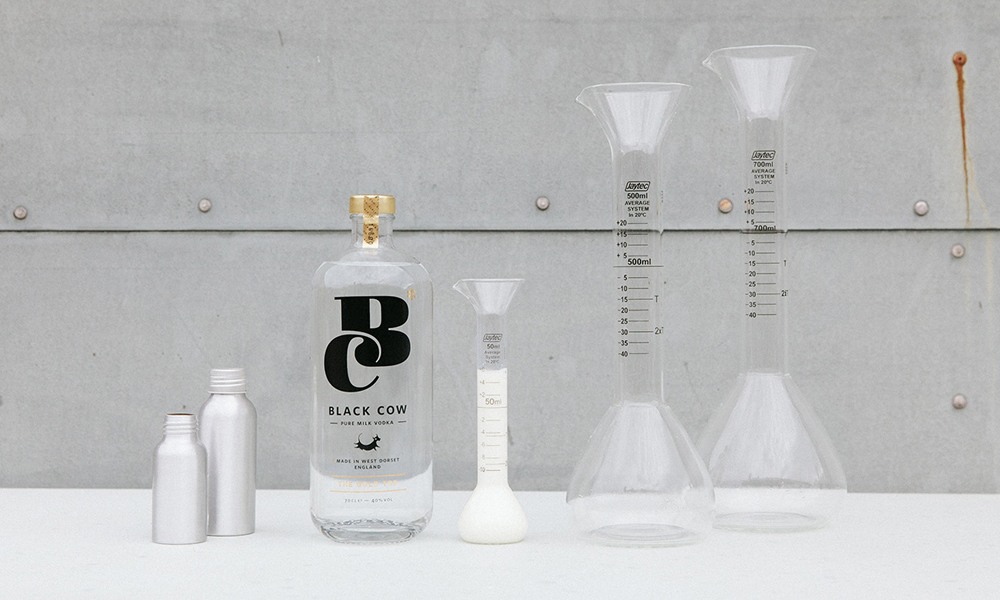The consumption of alcohol is about as straightforward as human activities can get. You get alcohol and put it in your body. Do that six or seven times and you’ve participated in an activity older than literacy. Alcohol delivering liquids are less straightforward. Different cultures ferment different things. For most of the guys reading this, it’s a form of barley, grape, or grain. Beer, whiskey, and vodka types are the standards happily indulged.
But we’re not close minded either. We fully support global efforts to get drunk. It’s just some of these wouldn’t have been the first things we thought of when we wanted alcohol.

Reindeer Antler Whiskey
There’s not a ton of information available about Reindeer Antler Whiskey, but then, how much info do you really need. This is a whiskey infused with reindeer horns. All the vital information is right there in the name. Anything we say past this is just some extra stuff we put in to try and be amusing and informative.
The whiskey comes from Thailand, being part of a long history of the Thai making herbal liquors. It’s a form of Yaa Dong, what the Thai call their herbal liquors. Yaa Dong were and are meant to serve as medicine of a sort, as the reindeer horn is believed to promote general well-being and increase vitality, while hundreds of other herbal infusions are used to treat both general and specific maladies. We’re inclined to agree with the Thai tradition on this one, seeing as how it’s whiskey and whiskey is good for you.
In fact, very little about this whiskey is odd, beyond the inclusion of reindeer. They use it as medicine and, in America, people could still get whiskey with a doctor’s prescription, explicitly making whiskey a medicine. Plus, there are still people who swear by the restorative powers of a hot toddy. All things considered, this is probably one of the healthier entries on this list. Link
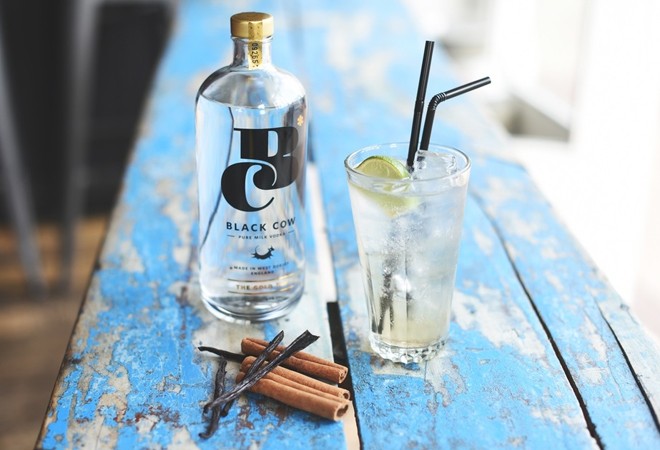
Milk Vodka
Our parents, like most parents, made sure we drank milk with dinner, at least occasionally. Which means, for us, milk has always been a healthy, bone-strengthening, distinctly familial beverage. But, obviously, nothing’s sacred and people have started making vodka from what once accompanied our home cooked meals. Black Cow is a company based in England’s West Dorset and boasts they’re the only company making vodka from milk and nothing else. Well, nothing but yeast.
Jason Barber is a dairy farmer who wanted to make different stuff with milk besides cheese and grocery store milk. Since he was interested in vodka already, he made the illogical connection between the two and started distilling milk vodka. We wish we were in the room with him when he made the decision, not because we want to talk him out of it, but because we can barely imagine a situation where we’re looking between a cow and a bottle of vodka thinking, “hey, wait a minute…”
To make the spirit, the milk is separated into curds and whey, just like your nursery rhymes used to tell you. The curds are taken off to make cheese while the whey is combined with a special yeast for converting the naturally present milk sugars into alcohol. We won’t go step by step, because it’s basically the same as making other types of alcohol and the weird part is right there at the beginning. Where we said milk.
Reviews for the vodka are generally positive. It sounds like a joke, but people actually describe it as a creamier, smoother vodka. If you’re looking to buy, you’ll have to send a message to Black Cow’s sales email, as it seems like there might be a different process if you’re outside the UK. Link
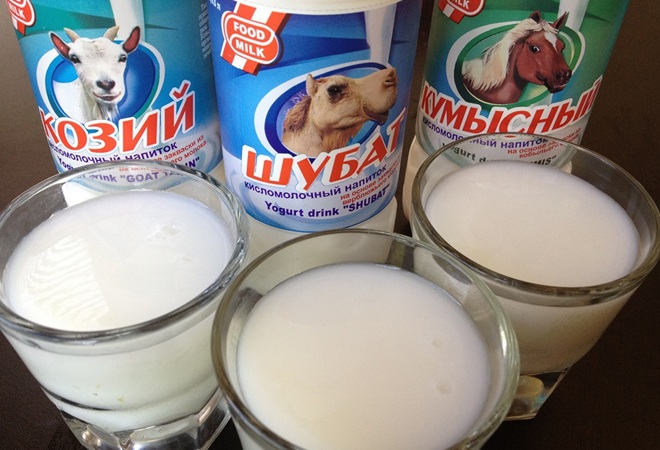
Kumis
If you thought milk was only going to appear once on this list, we have a surprise for you (everyone who thought milk wasn’t making an appearance are already surprised). The second milk entry, which is a phrase we should have thought more about, comes from a different animal. The bold and noble horse.
If Black Cow is making vodka from milk, then Kumis is milk beer. The main ingredient is horse milk. It’s a little shameful to say, but it never even occurred to us that horses would make milk. Of course they do, since they’re mammals and that’s one of the main things mammals do, we just never looked at a horse and thought it might provide us with something other than transportation. Getting back to our topic, mare’s milk is much higher in sugar content than cow milk and just leaving it to do its thing often achieves the desired result.
Kumis is on the low end of the alcohol scale, coming in at between one and three percent alcohol, making it the horse equivalent of kombucha. It can be distilled to become the stronger arkhi, a drink with twelve percent alcohol content, about the same as some stronger stouts.
We’re talking traditional kumis here, by the way. If you’re getting mass produced kumis, you’re most likely getting fortified cow’s milk, though in this case, corporate cost cutting isn’t the reason. Mare’s milk simply can’t be collected on the scale they’d need for mass production. But the traditional stuff is worth searching for and can most easily be found in rural Mongolia. Kumis is the drink that got Attila the Hun and Genghis Khan their million or so wives and fueled their Central-Asia-based hoards.
It’s unlikely that you’ll be able to find traditional Mongolian kumis in the States any time soon, knowing the difficulty and limitations of making it. That being said, we’re willing to bet there’s some recent transplant in Brooklyn scheming their way into the alcoholic horse milk market, so maybe it’s not too long before some form is available. Until then, you could always head to Mongolia. Link

Ttongsul
Our inability to finish this video is not a reflection on the interviewee. He seems like he’s got it together. He’s a doctor with a genuine care for his patients as well as Korean tradition. He’s also not the one who initiated the interview (that was the intrepid Yuka Uchida of VICE Japan), so he’s not forcibly foisting his esoteric medicinal practices on anyone. All that being said, Dr. Lee Chang Soo makes wine out of child poo.
It’s an old practice. So old that there’s next to no information online. The VICE interview was pretty much the only reputable source we would find during our research for this article. Ancient Korean texts talk about the medicinal value of feces, both animal and human, and, while we don’t speak Korean and relied on subtitles for the actual words of the interview, Dr. Soo’s tone was that of a man bemoaning the loss of an effective medicine.
To make the drink, Dr. Soo mixes rice wine and the poop from a child of one of his more open-minded, as he called them, patients. The concoction ends up with an alcoholic content of around 9 percent. It’s a mixture that a small number of Koreans swear by the same way an Irish grandmother forces tea and hot toddy’s on you the minute you cough or sneeze.
We also want to be extra clear. We’re not mocking this guy, or the patients he makes the wine for. Hell, he has more conviction and confidence when it comes to drinking poop wine than we have when we’re picking out a pair of shoes. It’s just, when we set out to write this article, we didn’t expect to write half the sentences we just had to. Link
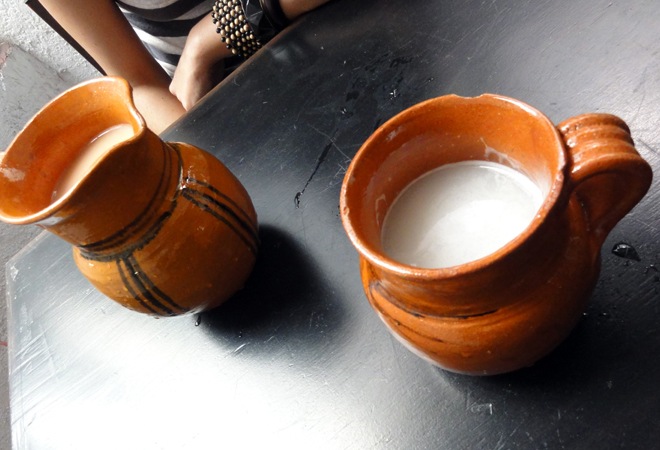
Pulque
We count ourselves lucky to be writing about alcohol when we are. We get to cover a craft beer renaissance, the slow and steady return of the cocktail, Matthew McConaughey’s surprisingly adroit entrance into bourbon, and the experimental IPA explosion, along with a dozen other events, festivals, books, and inventions, all aimed at enhancing the alcoholic experience. We’d be crazy to think we’re the only country doing anything like this.
Mexico’s having a revival of its own, this one centered around pulque. It’s an ancient drink, beating the Spanish to the area by 1,500 years and is what people were drinking before they got around to making mescal or tequila. They’re all made from the same plant, the maguey (agave), but pulque is a fermentation and not a distillation. Think of it as tequila beer. Which might not be helpful, since we have tequila flavored beer. Maybe a better way to say it is beer-tequila.
For alcohol it’s another one of those that hovers around the low end, between two and eight percent, but it’s the kind of drunk you get that keeps people coming back. The story that’s circulated is pulque doesn’t actually get your brain drunk, it just turns your limbs to paste. It would also seem that locals are proud of the effect the drink has on vacationing gringos, since most of the tourists can’t seem to handle it.
Another thing that keeps people coming back is a little healthy nationalism. Young people are returning to pulque, drawn by its deep roots in local history. The Spanish brought beer and because of that there’s a colonial vibe to it. Nothing like that with pulque. Mexicans can drink it like Eastern Europeans drink vodka, secure in their knowledge they did it first. Link
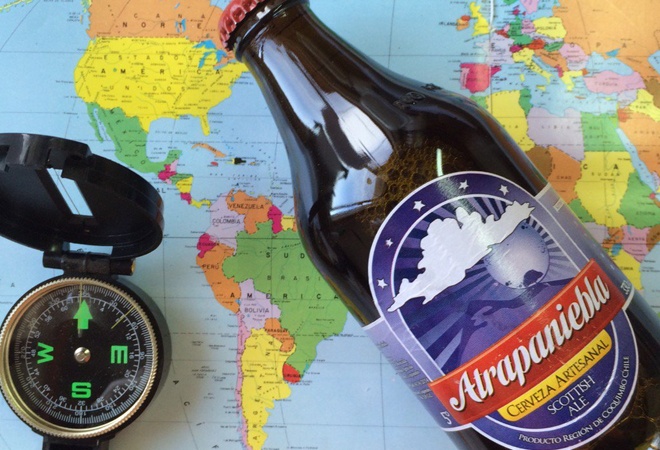
Fog Beer
Chile is host to the Atacama Desert, where people ask to go to hell when they’re thirsty. It’s one of the driest places in the world, seeing 0.6 inches of precipitation a year, and some places between 0.04 and 0.12 inches. Even if you don’t know the name, you’ve probably seen the pictures. In 2015, the desert erupted in color after an unusually wet year, but that was after the heaviest rainfall in two decades, where less than an inch of rain turned a town into a mudpit. It’s dry, is the point.
While there isn’t a ton of rain, a heavy fog called camanchaca is common and the source of most water for plant life in the desert. Recently, locals have been testing nests that capture water and the results have been heartening. The main goal is to provide a water source where there normally isn’t one, and like every other time in human history when people had water, they made sure alcohol wasn’t far behind. The Atrapaneblina Brewery is in Pena Blanca and makes beer using only the water they catch in their nets.
Before we give you the wrong impression, don’t think this is some kind of InBev level production. Atrapaneblina brewed 6,300 gallons of beer, while Anheuser-Busch InBev produced about 10.9 billion in 2015. It’s way, way less, so the Atacama’s water supply isn’t exactly threatened by these small time brewers.
They claim the water gives the beer a unique taste and we’re inclined to believe them. Water supply can affect a beer’s taste as much as the malt, yeast, and hops, and since these are the only people pulling beer from the air, the product’s bound to be something we’ve never tasted. Link

